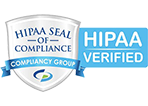Living With a TBI – Resources We Recommend in Recovery
Traumatic brain injuries (TBIs) can cause a range of physical and cognitive symptoms that can be challenging to navigate. But, with the right resources and support, people with TBIs can progress in their recovery and live fulfilling lives. Read on to explore some of the best resources available for TBI recovery.
Rehabilitation Centers
Rehabilitation centers, like Impact Medical Group of Sarasota, are an excellent resource for individuals with TBIs. They offer comprehensive treatment programs that address physical, cognitive, and emotional symptoms. Rehabilitation programs typically include physical therapy, speech therapy, occupational therapy, and cognitive rehabilitation therapy. These programs can be customized to meet the individual needs of each patient and can continue for several weeks, months, or even years.
Support Groups
Support groups provide individuals with TBIs with a supportive community where they can share their experiences and learn from others. Support groups can be a valuable resource for individuals who are struggling with cognitive or emotional symptoms or who are feeling isolated. Support groups can be found both in-person and online, and some of the best resources for finding support groups include the Brain Injury Association of America and the National Alliance on Mental Illness.
Mental Health Counseling
Many individuals with TBIs experience cognitive or emotional symptoms, such as anxiety, depression, or post-traumatic stress disorder (PTSD). Mental health counseling can be beneficial for individuals who are struggling with these symptoms. A mental health counselor can help individuals with TBIs develop coping strategies to manage their symptoms and improve their mental health and well-being.
Educational Materials
Learning about TBIs and understanding the injury can be helpful in developing coping mechanisms and strategies to manage symptoms. Websites such as BrainLine.org or organizations like the Brain Injury Association of America can provide educational resources to aid in recovery.
Assistive Technology
Assistive technology, such as speech recognition software, can help individuals with TBIs overcome cognitive or physical challenges. Some of the best assistive technology resources for individuals with TBIs include AbleData and the National Institute on Disability, Independent Living, and Rehabilitation Research. These resources can help individuals with TBIs find the right assistive technology tools to meet their unique needs.
Community and Government Resources
Many communities and the government have resources available to support individuals with TBIs. For example, some states have TBI waiver programs that provide funding for home and community-based services, such as personal care and transportation. Other community resources include vocational rehabilitation services, which can help individuals with TBIs return to work, or programs that offer recreational therapy.
Get the Resources You Need to Recover From TBI
Living with a traumatic brain injury can be challenging, but with the right resources and support, individuals with TBIs can progress their recovery and live fulfilling lives. Impact Medical Group of Sarasota is your partner in recovery, providing you with a comprehensive treatment plan that fosters your physical, cognitive, and emotional well-being. Call us today at () to schedule your free medical evaluation with our caring staff.
